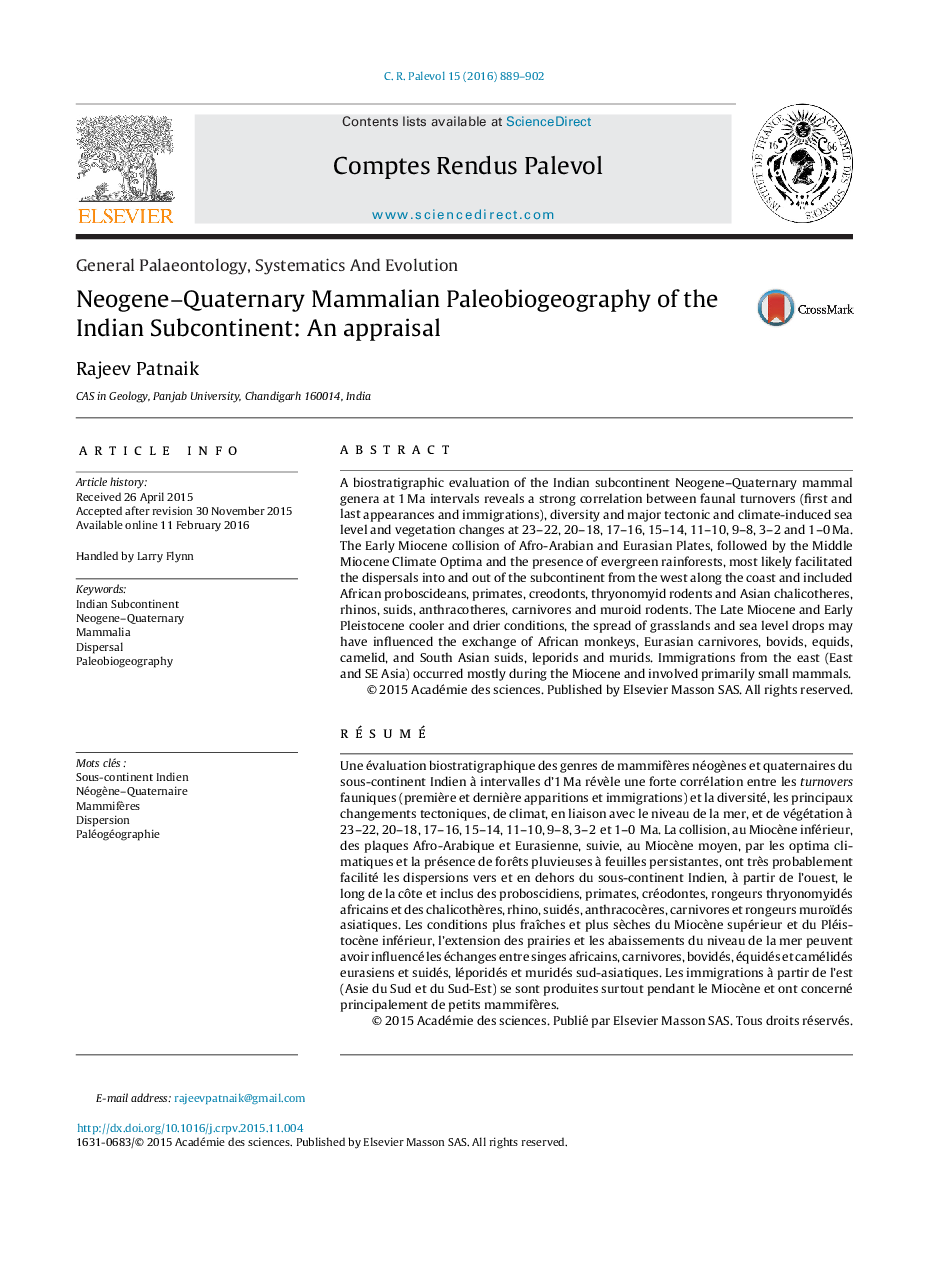| کد مقاله | کد نشریه | سال انتشار | مقاله انگلیسی | نسخه تمام متن |
|---|---|---|---|---|
| 4745640 | 1359769 | 2016 | 14 صفحه PDF | دانلود رایگان |

A biostratigraphic evaluation of the Indian subcontinent Neogene–Quaternary mammal genera at 1 Ma intervals reveals a strong correlation between faunal turnovers (first and last appearances and immigrations), diversity and major tectonic and climate-induced sea level and vegetation changes at 23–22, 20–18, 17–16, 15–14, 11–10, 9–8, 3–2 and 1–0 Ma. The Early Miocene collision of Afro-Arabian and Eurasian Plates, followed by the Middle Miocene Climate Optima and the presence of evergreen rainforests, most likely facilitated the dispersals into and out of the subcontinent from the west along the coast and included African proboscideans, primates, creodonts, thryonomyid rodents and Asian chalicotheres, rhinos, suids, anthracotheres, carnivores and muroid rodents. The Late Miocene and Early Pleistocene cooler and drier conditions, the spread of grasslands and sea level drops may have influenced the exchange of African monkeys, Eurasian carnivores, bovids, equids, camelid, and South Asian suids, leporids and murids. Immigrations from the east (East and SE Asia) occurred mostly during the Miocene and involved primarily small mammals.
RésuméUne évaluation biostratigraphique des genres de mammifères néogènes et quaternaires du sous-continent Indien à intervalles d’1 Ma révèle une forte corrélation entre les turnovers fauniques (première et dernière apparitions et immigrations) et la diversité, les principaux changements tectoniques, de climat, en liaison avec le niveau de la mer, et de végétation à 23–22, 20–18, 17–16, 15–14, 11–10, 9–8, 3–2 et 1–0 Ma. La collision, au Miocène inférieur, des plaques Afro-Arabique et Eurasienne, suivie, au Miocène moyen, par les optima climatiques et la présence de forêts pluvieuses à feuilles persistantes, ont très probablement facilité les dispersions vers et en dehors du sous-continent Indien, à partir de l’ouest, le long de la côte et inclus des proboscidiens, primates, créodontes, rongeurs thryonomyidés africains et des chalicothères, rhino, suidés, anthracocères, carnivores et rongeurs muroïdés asiatiques. Les conditions plus fraîches et plus sèches du Miocène supérieur et du Pléistocène inférieur, l’extension des prairies et les abaissements du niveau de la mer peuvent avoir influencé les échanges entre singes africains, carnivores, bovidés, équidés et camélidés eurasiens et suidés, léporidés et muridés sud-asiatiques. Les immigrations à partir de l’est (Asie du Sud et du Sud-Est) se sont produites surtout pendant le Miocène et ont concerné principalement de petits mammifères.
Journal: Comptes Rendus Palevol - Volume 15, Issue 7, September–October 2016, Pages 889–902